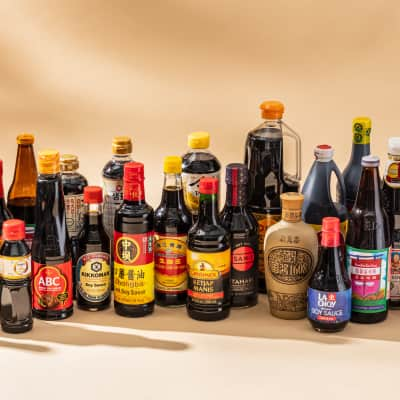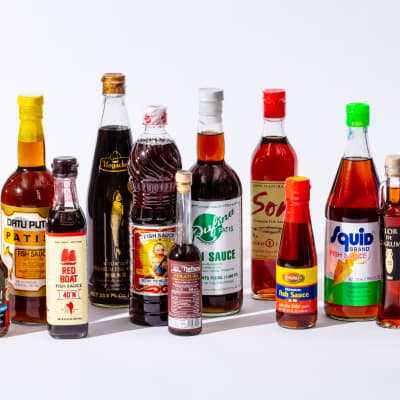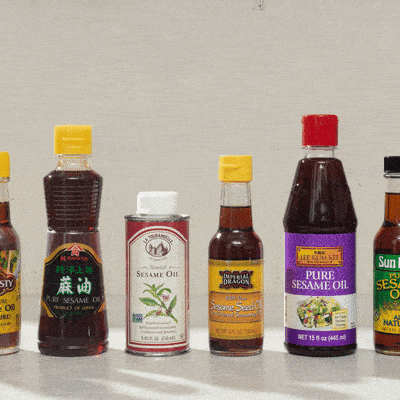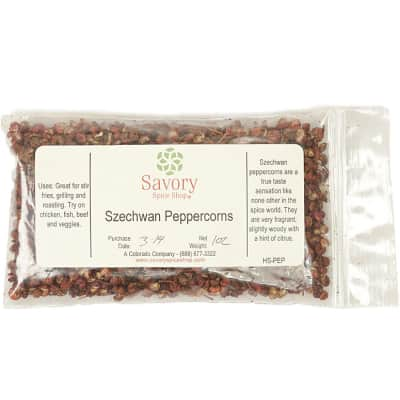Simple pork fried rice was one of the very first recipes I ever authored for Cook’s Country magazine, all the way back in 2016. During the recipe development for this dish I fell in love . . . not only with fried rice (it’s still a dream of mine to have a fried rice food truck) but also with the stir-fry cooking method. For me, there’s nothing like it. The heat’s high and everything cooks in a flash. The ingredients go into the ripping hot pan and sizzle fiercely. Seconds later they’re beautifully browned. And it’s not just the stir-fry cooking method I love; I also admire the surprising, bold, and seemingly unending flavors that come from an Asian pantry. I could easily turn this article into a love song about hoisin sauce or toasted sesame oil.
Everything You Need to Start Stir-Frying at Home
Published Oct. 12, 2018.

Sign up for the Cook's Country Watch and Cook newsletter
Latest recipes, episodes, and behind-the-scenes stories from the CC team.
While my love for stir-fry recipes clearly runs deep, it’s precisely some of the things I love the most about this technique—cranking the flame up to high, cook times of less than a minute, new-to-me ingredients—that can scare the bejeezus out of home cooks who are new to stir-frying and Asian cuisine. So here’s some advice from a cook whose made more than one or two steamy, soggy, overwhelmingly salty, or burnt stir-fries in his time and has learned from his mistakes: All you need to make a foolproof stir-fry every time is a good recipe and the right equipment.
Here’s what you’ll need to set yourself up properly for stir-frying.
1. A truly nonstick skillet
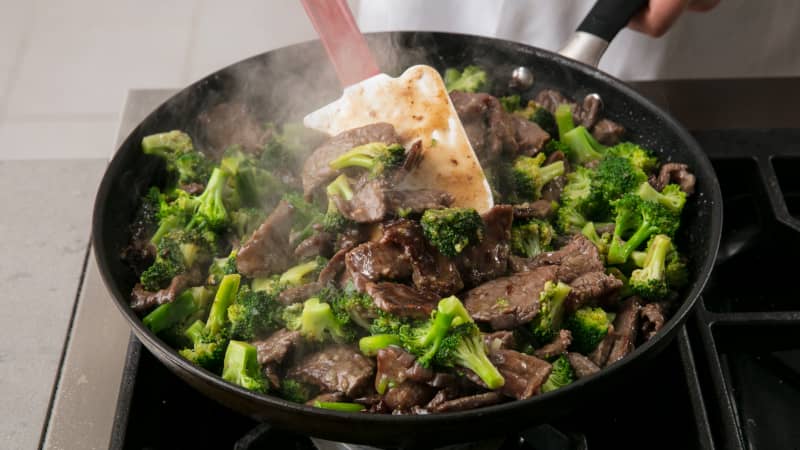
Even the best nonstick skillet has a breaking point. Somewhere between another illicit trip through the dishwasher and another well-meaning relative daring to use a metal whisk in it, your nonstick pan simply will not be nonstick anymore. And when it comes time to replace or upgrade your current nonstick pan, I recommend choosing our most used pan in the test kitchen (and in my home).
2. A set of mini prep bowls

Some home cooks might think that the idea of mise en place—that is, having all your ingredients prepped and ready to cook—is reserved for celebrity chefs cooking on TV. But it’s a must for quick-cooking dishes, and no other method of cooking will expose your lack of preparedness like stir-frying. You don’t want to get caught trying to peel and grate fresh ginger while you’re watching a hot pan. Having a good set of prep bowls on hand will help you stay ready, organized, and calm.
3. A good rubber spatula
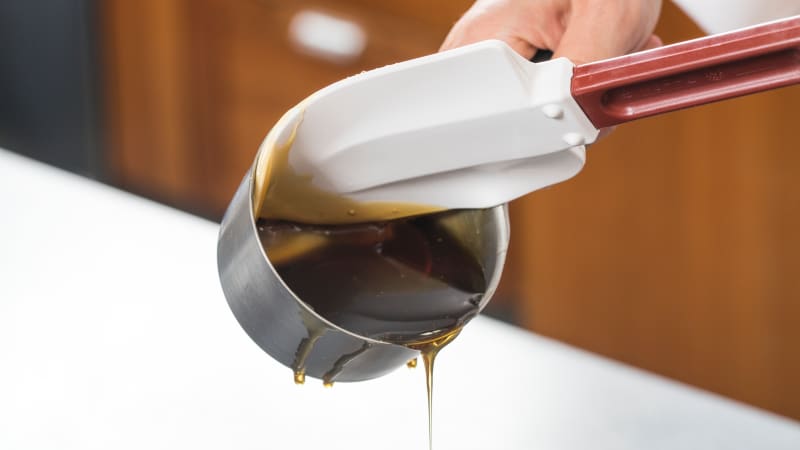
A good heatproof silicone spatula—the kind with a flexible head to scrape every last bit of sauce out of the nonstick skillet—is my go-to tool when stir-frying (or when cooking just about anything). It’s a better choice than a wooden spoon—the spoon’s rigid head can only scrape small swaths of the skillet at once.
4. A nonstick-safe pair of tongs

Whether you’re flipping your carefully browned strips of beef or stir-frying noodles, protect that nonstick coating in your pan with a pair of trustworthy tongs.
5. A sharp chef’s knife

It might seem obvious, but I’m always surprised at the dullness of the knives even seasoned home cooks will tolerate using. If you prefer to slice rather than mush your scallion greens, grab yourself a good sharp chef’s knife, or sharpen up your current knife with a sharpening steel or electric sharpener.
6. Some ingredient know-how
Soy Sauce: Soy sauce is packed with flavor-enhancing umami, which adds depth to many dishes. We feature it in all kinds of Asian dishes, but we also harness its savory flavor in recipes as diverse as barbecue, burgers, fried chicken, corn on the cob, vegetable soup, and lamb chops.
FUN FACT: Soy sauce is one of the oldest food products in the world. It originated in China about 2,500 years ago and made the leap to Japan around the seventh century.
A Celebration of Soy Sauce
Soy sauce is essential in many culinary traditions—and no two styles are the same.Fish Sauce: It’s like soy sauce’s bolder cousin. Don’t let the smell fool you—just a dash of this glutamate flavoring can turn a “meh” sauce into one that will have people begging for your recipe. It boasts a rich, savory flavor and a brininess that brings out depth in everything from dipping sauces and soups to stir-fries and marinades.
FUN FACT: Fish sauce gets its signature flavor from fermented anchovies. The process for how fish sauce is made differs among producers but the basic process is the same: Fresh, whole anchovies are layered with sea salt and left to ferment in vats for at least 12 months. Over time, the fish breaks down and the salty liquid that forms is collected and filtered before bottling.
The World of Fish Sauce
Fish sauce has deep flavor—and deep historical roots around the world.Hoisin Sauce: Hoisin sauce is a thick, reddish brown mixture of soybeans, sugar, vinegar, garlic, and chiles used in many classic Chinese dishes, including barbecued pork, Peking duck, and mu shu pork. The perfect hoisin sauce balances sweet, salty, pungent, and spicy elements.
All About Hoisin Sauce
Hoisin sauce is one of the most iconic ingredients in Cantonese cooking. We delved deep into the history and usage of this ingredient. Here’s what we found.Oyster Sauce: Bottled oyster-flavored sauce is a rich, concentrated mixture of oyster extractives, soy sauce, brine, and assorted seasonings. The brown sauce is thick, salty, and strong. It’s a key ingredient in our Beef and Broccoli Stir-Fry.
FUN FACT: There are actually two types of oyster sauce. The first is bottled oyster sauce, called “oyster-flavored sauce.” The second is a cooked sauce that contains oyster-flavored sauce—think, for example, about ordering a dish such as "broccoli with oyster sauce" in a Chinese restaurant.
Toasted Sesame Oil: Toasted sesame oil is seemingly ubiquitous in a variety of Chinese and Japanese dishes. The intense, nutty, roasted flavor that toasted sesame oil adds is irreplaceable and a signature flavor of our Hot Sesame Noodles with Pork.
KITCHEN NOTE: Plain and toasted sesame oil cannot be used interchangeably. The plain version of sesame oil is made from raw sesame seeds and has very little color, smell, or flavor. The toasted version is made from toasted seeds—toasting draws out the seeds’ rich flavor and aromas.
Toasted Sesame Oil
Nutty and fragrant, a good-quality toasted sesame oil can enhance all kinds of dishes, but bad ones just taste oily or burnt. How do you guarantee great flavor?Rice Vinegar: A relatively mild, neutral source of brightness and vibrancy in stir-fry sauces.
FUN FACT: Rice vinegar is made from steamed rice that’s blended with yeast and fermented into alcohol before being aerated to form vinegar.
Five-Spice Powder: Five-spice powder adds a kick that offsets richness in both sweet and savory recipes. In traditional Chinese cooking, the five elements of the cosmos—earth, fire, metal, water, and wood—are represented by five-spice powder. Most blends from China include cinnamon, star anise, cloves, fennel, and Sichuan pepper. (Companies selling five-spice powder in America often substitute white or black pepper for Sichuan.)
Five-Spice Powder
We tested six brands of five-spice powder to determine which really delivered an authentic Asian flavor.Sichuan Peppercorns: Don’t be fooled by their name or appearance: The small, reddish brown husks called Sichuan peppercorns aren’t peppercorns at all. They’re the dried fruit rinds from a small Chinese citrus tree called the prickly ash. Though typically ground and added to spicy dishes, they don’t contribute heat. Instead, they contribute a unique tingling or buzzing sensation much like carbonation, which is due to a pungent compound called sanshool that acts on receptors that usually respond to touch.
KITCHEN NOTE: Just like dried beans, all Sichuan peppercorns must be picked through to remove debris.
Sichuan Peppercorns
We tasted five brands of Sichuan peppercorns to find out which had the best flavor and tingle.7. A good recipe
Now that you have a better understanding of the tools and ingredients you should have on hand to create a successful stir-fry, try one of our recipes at home.
